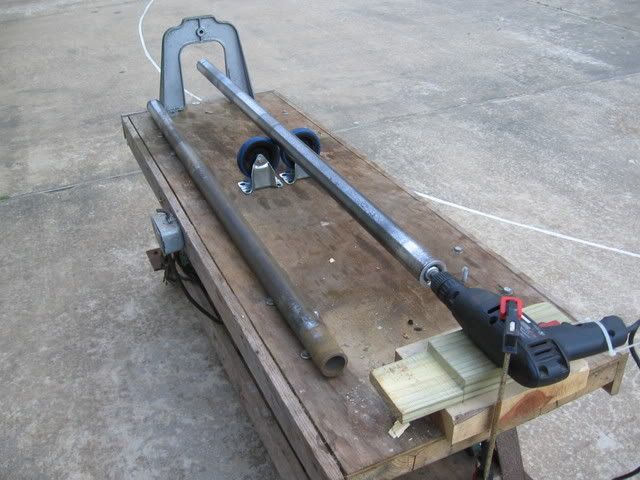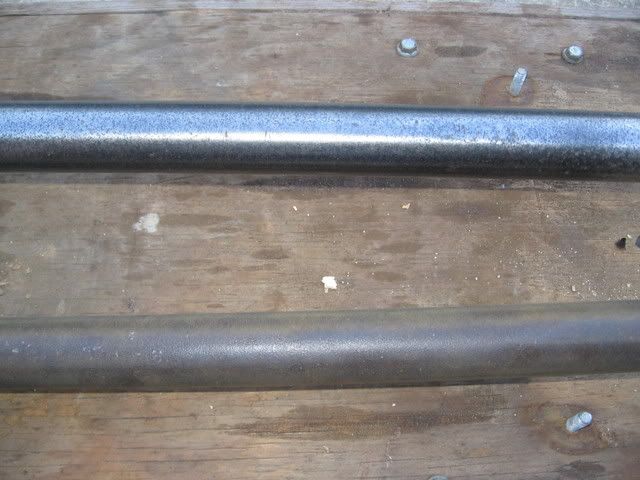Page 3 of 4
Posted: Tue Apr 07, 2009 5:59 pm
by royalcanon
heathicus wrote:One day I'm going to try the electrolysis. And I remember science projects as a kid using a potato as an energy source... I might just have to do some more research!

This may seem weird and off topic but I remember something else about rotting potatoes. In the 20's and 30's before commercial hair straighteners were marketed to straighten African American hair. Rotting Potatoes were used to create a slime that was combed through he hair to damage it and straighten it. Later it was commercialized to create Lye straighteners. In The modern version sodium Hydroxide is the main chemical and that is also the active ingredient in Drano. These are high on the Base scale about an 11 or 12. So my wondering is. . . are the the potatoes just creating a lye solution and isn't that the other thing that can be used in the electrolysis bath. Couldn't you just skip the potatoes and use lye. The potatoes may sound innocent but I wonder if they are just a natural way to create a pretty serious chemical. Drano does harm pipes doesn't it. So this is my contribution to the science experiment.
Posted: Wed Apr 08, 2009 12:35 am
by heathicus
mickyd wrote:You would be surprised how many of those pits can be removed if you patiently follow
this procedure(or use a lathe if you have one).
So here is a picture of my "MickyD Lathe(TM)" in action. I used a pair of casters to roll the tube on so heat from friction wouldn't be a problem.
 Link to Hi-Res
Link to Hi-Res
This system worked out great! Here is a closer shot of the two tubes - one about half way through my sanding process, the other waiting its turn.
 Link to Hi-Res
Link to Hi-Res
Posted: Wed Apr 08, 2009 12:49 am
by mickyd
heathicus wrote:So here is a picture of my "MickyD Lathe(TM)" in action. I used a pair of casters to roll the tube on so heat from friction wouldn't be a problem.
This system worked out great! Here is a closer shot of the two tubes - one about half way through my sanding process, the other waiting its turn.
Well how cool it this setup!!! Excellent job with using those casters. That is a great way to keep the friction down. I LOVE IT!! I am going to link out to your post from my other thread. People have to see this setup. Great improvement.
You need to edit your links to the high res photos. There is some extra code hanging out on the end of the link that prevents them from working. I'll tell you more if you can't figure it out but I think you'll notice when you look at them.
Posted: Wed Apr 08, 2009 8:25 am
by heathicus
Links are fixed, Mike. Thanks for pointing that out and for the kind words. I racked my brain for a long time trying to think of a way to do something like this. But I didn't know about expansion plugs. And as GI Joe would say, "Knowing is half the battle!"
Posted: Wed Apr 08, 2009 8:31 am
by dusty
What was the safety guard before it became the safety guard. Very innovative devices you folks have developed.
Posted: Wed Apr 08, 2009 9:13 am
by JPG
dusty wrote:What was the safety guard before it became the safety guard. Very innovative devices you folks have developed.
Maybe he got hold of a tail stock casting from a pre release 530!:D
Posted: Wed Apr 08, 2009 9:18 am
by heathicus
That's actually the headrest for the ER.

Posted: Wed Apr 08, 2009 10:08 am
by mickyd
heathicus wrote:So here is a picture of my "MickyD Lathe(TM)" in action. I used a pair of casters to roll the tube on so heat from friction wouldn't be a problem.
Hey heathicus, did you use this beast with the casters free standing or did you eventually mount them?
Posted: Wed Apr 08, 2009 10:22 am
by heathicus
mickyd wrote:Hey heathicus, did you use this beast with the casters free standing or did you eventually mount them?
I guess it's hard to tell from the pictures, but the casters are screwed down to the bench surface.
That bench was part of the ER I bought that I'm restoring and I'm using it as a work surface. It's in rough shape, and I plan on rebuilding it after the ER is completed.
Posted: Wed Apr 08, 2009 10:30 am
by JPG
heathicus wrote:I guess it's hard to tell from the pictures, but the casters are screwed down to the bench surface.
That bench was part of the ER I bought that I'm restoring and I'm using it as a work surface. It's in rough shape, and I plan on rebuilding it after the ER is completed.
That explains the switch.


